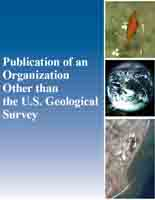Crustal to mantle melt storage during the evolution of Hawaiian volcanoes
Links
- More information: Publisher Index Page (via DOI)
- Open Access Version: Publisher Index Page
- Download citation as: RIS | Dublin Core
Abstract
As the Pacific Plate migrates over the mantle plume below Hawaiʻi, magma flux decreases, resulting in changes in eruptive volume, style, and composition. It is thought that melt storage becomes deeper and ephemeral with the transition from highly voluminous tholeiitic (shield stage) to the less voluminous alkaline (post-shield and rejuvenation stages) magmatism. To quantitatively test this, we applied high-precision fluid inclusion barometry via Raman spectroscopy to samples from representative volcanoes of different evolutionary stages. This suggests an evolution from shield-stage shallow magma storage (~1 to 2 kilometers) for Kīlauea to a post-shield stage that includes crustal magma storage within the volcanic edifice (~2 kilometers) and deeper storage below the Moho (~20 to 27 kilometers) for Haleakalā. The rejuvenation stage (Diamond Head) displays mantle-dominated storage (~22 to 30 kilometers). High melt fluxes likely form stable conduits from the mantle to a shallow reservoir in the shield volcanoes. As melt flux decreases, the Moho becomes the boundary controlling melt stagnation and evolution.
Study Area
| Publication type | Article |
|---|---|
| Publication Subtype | Journal Article |
| Title | Crustal to mantle melt storage during the evolution of Hawaiian volcanoes |
| Series title | ScienceAdvances |
| DOI | 10.1126/sciadv.adu9332 |
| Volume | 11 |
| Issue | 20 |
| Publication Date | May 14, 2025 |
| Year Published | 2025 |
| Language | English |
| Publisher | AAAS |
| Contributing office(s) | Volcano Science Center |
| Description | eadu9332, 9 p. |
| Country | United States |
| State | Hawaii |


